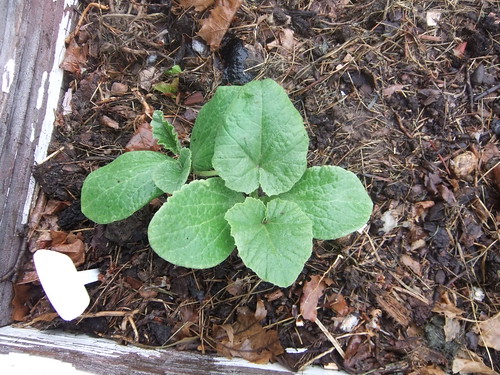Post by Joseph Lofthouse on May 9, 2011 14:41:57 GMT -5
Breeding a Perennial Tetraploid Watermelon
Abstract
Discussion
Method
Collaboration
------------------------------------------------------
I invite feedback. I'd welcome collaboration if you are able to grow one (tetraploid, hexaploid, chimeric, polyploid) watermelon plant that is isolated by a couple hundred feet from any other watermelons and return some seeds to me if it produces any. A critical data point for evaluating each plant would be the number of fruits produced and the number of seeds per fruit.
After I get comfortable with the conversion process I may attempt to make a tetraploid watermelon landrace, but for simplicity starting out I'm going to focus on a variety for which I have plenty of seed.
Regards,
Joseph
Abstract
I am attempting to create a perennial tetraploid watermelon. The watermelon genes will be provided by Citrullus lanatus, and the perennial genes will be provided by Bryonia alba, a common winter-hardy plant that grows wild in the nearby mountains. The two parents are closely-related species of different genera in the same sub-tribe: Benincasinae. Even if the inter-generic cross is unsuccessful the breeding project is expected to produce an open-pollinated open-source tetraploid watermelon.
Discussion
The breeding program is being conducted in Northern Utah in a high altitude garden with a short growing season. Locally adapted watermelon will be used. Bryonia alba was selected as a parent because it is a winter-hardy closely-related perennial that grows in the surrounding mountains.
The chromosome number of cultivated watermelons is 2n=22, and the chromosome number of B. alba is 2n=20. This would be expected to create incompatibility problems if the two species were directly crossed with each other. A direct cross will be attempted, with little expectation that it will be fertile. It is expected that the incompatibility issues would be lessened if the parents were first converted to tetraploids and then crossed with each other.
Seedlings will be treated with Oryzalin which is a readily available pre-emergent herbicide that when used in small quantities can be used to convert diploid plants to tetraploid plants.
Method
Seeds will be germinated in a warm environment for a few days until the root is about an inch long. The growing tip will be immersed overnight in a dilute solution of Oryzalin. The seedlings will then be planted in soil and evaluated by phenotype for tetraploid characteristics. Untreated controls will also be grown. Treated plants with diploid or chimeric characteristics will be eliminated from the program.
The extremely dilute Oryzalin solution will be created from off-the-shelf herbicide containing 40% Oryzalin by dissolving 1ml of herbicide in 100 ml of water and then adding 3 ml of that solution to one Liter of water. This is expected to produce a 10 PPM solution of Oryzalin.
Watermelon plants that appear to be tetraploid will be offered for grow-out to interested collaborators. The seeds returned by collaborators will be grown out to evaluate ploidy levels, fertility etc... (Collaborators could also conduct the second year grow-out and evaluation.) The watermelon lines that appear to be high fertility tetraploids will be developed into an open-pollinated open-source tetraploid watermelon.
A short study will be conducted to evaluate optimal conversion conditions.
B. alba tetraploid plants will be grown in-house.
After relatively stable high fertility tetraploid lines have been developed for these two species they will be cross pollinated and evaluated for desirable agronomic and culinary traits including winter hardiness and a perennial root system. The fruit of B. alba is extremely bitter. Selecting for non-bitter fruits will be a high priority.
Collaboration
Send me a personal message or email if you want to help and are able to grow one watermelon seedling in the usa in 2011 in relative isolation from other watermelons. In later years collaboration will be done via seeds.
------------------------------------------------------
I invite feedback. I'd welcome collaboration if you are able to grow one (tetraploid, hexaploid, chimeric, polyploid) watermelon plant that is isolated by a couple hundred feet from any other watermelons and return some seeds to me if it produces any. A critical data point for evaluating each plant would be the number of fruits produced and the number of seeds per fruit.
After I get comfortable with the conversion process I may attempt to make a tetraploid watermelon landrace, but for simplicity starting out I'm going to focus on a variety for which I have plenty of seed.
Regards,
Joseph









